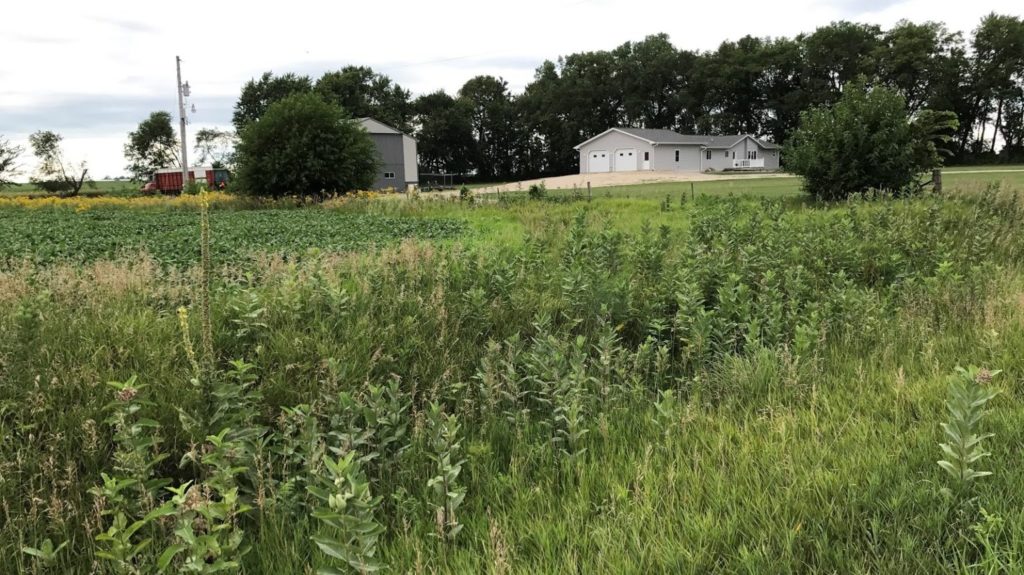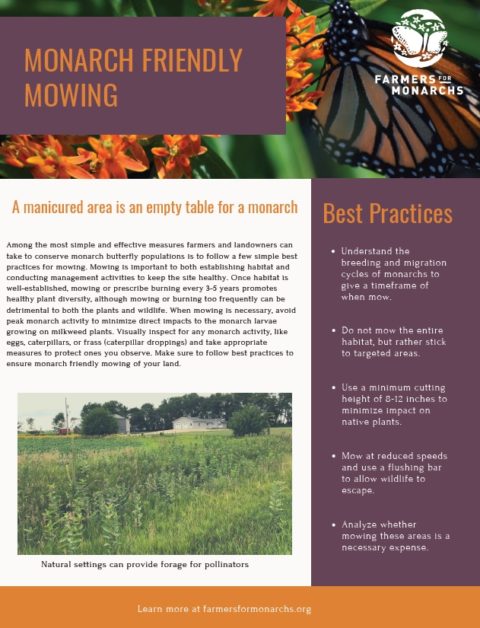A MANICURED AREA IS AN EMPTY TABLE FOR A MONARCH
Among the most simple and effective measures farmers and landowners can take to conserve monarch butterfly populations is to follow a few simple best practices for mowing. Mowing is important to both establishing habitat and conducting management activities to keep the site healthy. Once habitat is well-established, mowing or conducting a prescribed burning every 3-5 years promotes healthy plant diversity. Mowing or burning too frequently, however, can be detrimental to both the plants and wildlife. When mowing is necessary, avoid peak monarch activity to minimize direct impacts to the monarch larvae growing on milkweed plants. Visually inspect for any monarch activity - such as eggs, caterpillars, or frass (caterpillar droppings) - and take appropriate measures to protect the ones you observe. We have listed several best practices below you can follow to ensure monarch friendly mowing of your land.

POLLINATOR-FRIENDLY MOWING BEST PRACTICES
-
Understand the breeding and migration cycles of monarchs to give a timeframe of when to mow.
-
Do not mow the entire habitat, but rather stick to targeted areas.
-
Use a minimum cutting height of 8-12 inches to minimize impact on native plants.
-
Analyze whether mowing these areas is a necessary expense.
-
Mow at reduced speeds and use a flushing bar to allow wildlife to escape.

